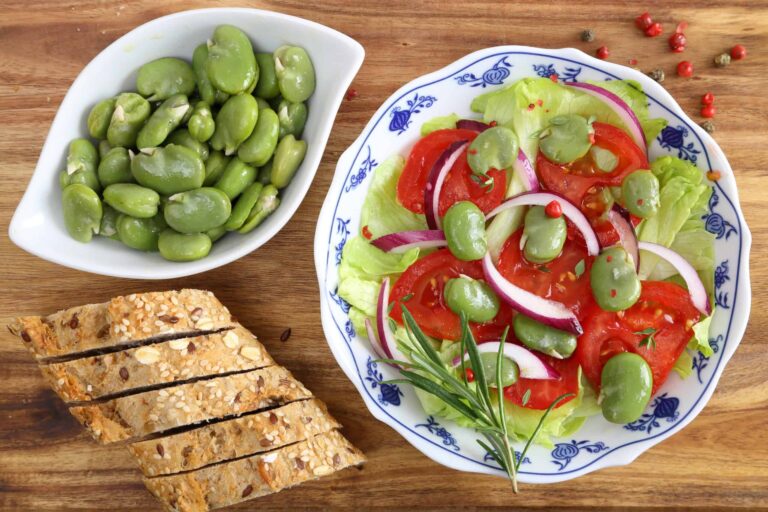How to Water and Feed Chickpeas for Maximum Pod Production
Maximizing chickpea production is all about balance—steady early moisture, light fertility, and dry conditions as pods form. After years of growing garbanzo beans in raised beds and wide-row plantings, I’ve learned that chickpeas reward a hands-off approach. They’re legumes, so they fix their own nitrogen, and they naturally thrive in drier soils. But timing your watering and feeding makes a dramatic difference in how many pods develop.
Here’s how to water and feed chickpeas for strong, consistent pod production.
Understanding Chickpea Growth Stages
Chickpeas go through three moisture-sensitive stages:
- Germination and early root development – needs even moisture
- Vegetative growth and branching – moderate moisture
- Flowering and pod formation – dry-to-moderate moisture
Knowing when to supply water—and when to hold back—is central to good yields.
How to Water Chickpeas for Maximum Pods
Watering at Germination (Weeks 1–2)
Consistent moisture is critical early on.
- Keep the top 1–2 inches of soil evenly moist.
- Avoid waterlogging—chickpeas rot easily in wet soil.
- In raised beds, a single deep irrigation every 3–4 days is usually enough.
In my experience, cool mornings and light irrigation encourage strong taproot development, which supports heavy branching later.
Watering During Vegetative Growth (Weeks 3–6)
Once seedlings are established:
- Water deeply once every 5–7 days, depending on rainfall.
- Allow the soil surface to dry between waterings.
- Aim for soil moisture that supports steady growth but does not saturate.
Chickpeas that are watered too frequently grow lush but produce fewer flowers.
Watering During Flowering and Pod Set (Weeks 7–10)
This is where many gardeners overwater—and reduce yield.
- Reduce watering to encourage flower formation.
- Water only when the top 2–3 inches of soil are dry.
- In warm climates, deep water every 7–10 days.
- Too much moisture during bloom causes flowers to drop.
I’ve consistently seen higher pod counts when soil is slightly dry during bloom.
Watering During Final Ripening (Weeks 10–14)
For dry chickpeas:
- Stop watering entirely once pods begin to yellow.
- Dry soil speeds final ripening and reduces disease risk.
For fresh green chickpeas:
- Continue occasional light irrigation every 10–14 days until harvest.
How to Feed Chickpeas Without Reducing Yield
The Crucial Rule: Avoid Nitrogen Fertilizer
Chickpeas fix their own nitrogen through root nodules. Adding nitrogen:
- Delays flowering
- Reduces pod set
- Creates overly leafy plants with fewer beans
I’ve tested nitrogen additions several times, and yields always drop.
What to Add Instead
Chickpeas are light feeders. They prefer soils that are fertile but not rich.
At Planting Time
Add:
- 1–2 inches of compost (worked into the top 4 inches)
- A handful of rock phosphate or bone meal if your soil is low in phosphorus
Phosphorus supports strong root and flower development.
Mid-Season Feeding
Most chickpeas won’t need additional fertilizer.
But if plants look pale or growth is slow—not lush, but weak—add:
- A small side-dress of compost only
- Never high-nitrogen fertilizers or manure-based products
Soil pH for Best Feeding Response
Chickpeas perform well when pH is between 6.0 and 7.0.
In more acidic soils, a small amount of garden lime improves nutrient uptake.
Mulching Tips
Mulching chickpeas is optional, but helpful in dry regions.
- Use light mulch (straw, leaves, or dried grass) 1–2 inches deep.
- Avoid heavy mulch early in spring—chickpeas prefer warming soil.
- Mulch is most helpful during pod set to reduce heat stress.
Troubleshooting Watering and Feeding Problems
Problem: Lots of foliage, few pods
Cause: Too much nitrogen or too much water during flowering.
Fix: Stop fertilizing; cut back watering by half.
Problem: Yellowing lower leaves early
Cause: Water stress or poor drainage.
Fix: Deep water once; improve soil drainage or raise the bed.
Problem: Pods fail to fill
Cause: Heat stress or inconsistent moisture early in flowering.
Fix: Add light afternoon shade and water deeply once weekly.
Final Thoughts
Chickpeas thrive when you mimic the Mediterranean conditions where they evolved: cool spring soil, moderate moisture, and lean nutrition. Watering lightly, feeding sparingly, and focusing on timing—not quantity—leads to the highest pod production. Once you understand their natural rhythm, chickpeas become one of the most reliable and rewarding legumes you can grow.
Chickpea Learning Hub
Start Here / Overview
- Mastering Chickpeas: Planting, Growing, and Harvesting Tips
- How to Plant, Grow, and Harvest Chickpeas (Garbanzo Beans): The Complete Guide
Planning & Planting
- Best Chickpea Varieties to Grow: Kabuli, Desi, Black, and Specialty Types
- Short-Season Chickpeas: Best Varieties and Tips for Cooler Climates
- When to Plant Chickpeas: Temperature, Frost Windows, and a Month-by-Month Calendar
- How to Start Chickpeas From Seed: Indoors, Outdoors, and Spacing Tips
- Can You Grow Chickpeas in Containers? What Works—and What Doesn’t
- Growing Chickpeas in Raised Beds
- Best Companion Plants for Chickpeas (and What to Avoid)
Care & Maintenance
- How to Water and Feed Chickpeas for Maximum Pod Production
- Chickpea Care Guide: Weeding, Mulching, Trellising, and Seasonal Maintenance
Pests, Diseases & Troubleshooting
- Chickpea Pests: Identification, Prevention, and Organic Controls
- Chickpea Diseases and How to Prevent Them: Blight, Mosaic, Anthracnose & More
- Troubleshooting Chickpeas: Why Plants Fail, Don’t Flower, or Don’t Make Pods
Harvesting & Post-Harvest
- Harvesting Chickpeas: Fresh Green Pods vs. Dried Beans
- How to Store and Preserve Chickpeas: Fresh, Dried, Canned, or Frozen
Cooking & Enjoying




